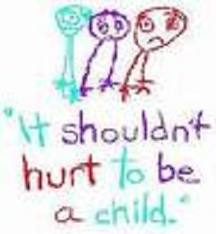The Epidemic of the Unwanted
Why do the numbers of abused and neglected children continue to grow?
What happens to our little unwanted?
According to the child abuse hotline (1-800-4-a-child), over 5 million reports of child abuse are received in the United States each year, or one report every 10 seconds of every day.
More than half (61 percent) of the children (771,700 children) were victims of neglect, meaning a parent or guardian failed to provide for the child’s basic needs. Forms of neglect include educational neglect (360,500 children), physical neglect (295,300 children), emotional neglect (193,400) and vastly under reported medical needs neglect.
Another 44 percent were victims of abuse (553,300 children), including physical abuse (325,000 children), sexual abuse (135,000 children), and emotional abuse (148,500 children).
More than 160 children under the age of 4 die each month as a result of child abuse.
It is estimated however, that between 60-85% of child fatalities that are due to maltreatment are not recorded as such on death certificates.
Poverty can be a driving force that requires more than 500,000 foster care placements a year. Bear in mind, the children, half of whom are female, have no doubt already suffered significant trauma because of physical abuse, neglect, sexual abuse, abandonment, medical neglect, caretaker incarceration or death.
Some of those in foster care are reunited with their parent, some adopted. Most receive more than one placement and some eventually age out of the system. In Texas, that’s called the cradle to prison pipeline.
CHILDHELP prevention and treatment of child abuse writes that about 30% of abused and neglected children will later abuse their own children, continuing the horrible cycle of abuse. According to the Guttmacher report, they are more likely than the population as a whole to have unintended pregnancies, continuing the epidemic of child abuse. Abused children are 25% more likely to experience teen pregnancy.
Add the stress of the times, loss of homes, jobs and income, is it any wonder that the annual cost of child abuse and neglect in the United States exceeds 1 billion dollars a year.
In a study done in 2004, The Minnesota Department of Health found that women whose pregnancies are unintended are more likely to have infants who are low birth weight and are less likely to breastfeed. Their infants are more likely to be abused and more likely to die in their first year. They are more likely to be raised by one parent, and these children are more likely to become teen parents themselves.
Further, about half of all unintended pregnancies end in abortion.
One has to wonder if that isn’t best for the unwanted and the unintended.



Leave a Reply